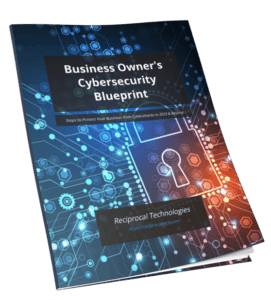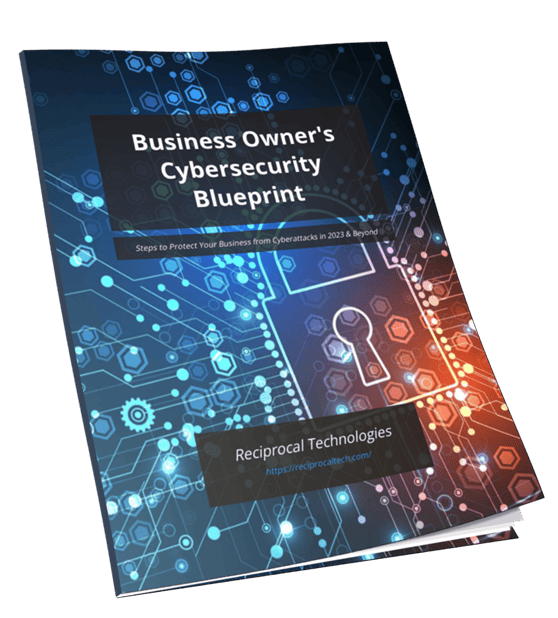Debugging Slowness: 10 Reasons Your Computer Is Underperforming & Solutions

Dealing with a slow computer can be incredibly frustrating. Tasks take longer, apps freeze, and your patience wears thin. Performance issues don’t just waste time—they disrupt your workflow and reduce productivity. Ignoring these problems often leads to more serious complications that could have been avoided.
Without proper diagnosis, you might waste effort on ineffective fixes or overlook problems like hardware failure or malware infections. Understanding what slows down your machine helps you focus on targeted solutions that bring real improvements.
Below, we’ll break down the most common reasons behind slow computer performance and offers practical steps to fix each one:
- Full hard drive cluttering system resources
- Outdated drivers causing communication issues
- Failing hardware components dragging speed down
- Excessive or unnecessary software updates
- Too many programs launching at startup
- Viruses and malware draining power
- Low power mode restricting performance
- Browser add-ons consuming memory
- Visual effects settings overloading the system
- Internal dust buildup and aging hardware
Each section explains how to identify the problem and provides clear instructions for resolving it effectively. You’ll learn how to restore speed without guessing or relying on trial and error.
1. Full Hard Drive
When disk space is nearly maxed out, your system struggles to manage files and run programs efficiently. This leads to longer load times, frequent freezing, and sluggish overall performance.
You can check your storage usage by:
- On Windows: Open Settings > System > Storage to see a breakdown of used vs. free space.
- On macOS: Click the Apple menu > About This Mac > Storage tab for a similar overview.
Freeing up space helps restore speed. Try these steps:
- Delete unnecessary files like old documents, downloads, and duplicate photos.
- Use built-in tools such as Disk Cleanup on Windows or Optimize Storage on macOS.
- Uninstall unused applications that take up large amounts of storage.
- Move rarely accessed files to an external drive or cloud storage service.
Aim to keep at least 15-20% of your hard drive free for optimal performance. Too little free space forces your system to work harder, making everything feel slower.
2. Outdated Drivers
Old drivers can cause speed and stability problems on your computer. They may not work well with newer software or hardware, leading to performance issues.
How Outdated Drivers Affect Performance
When your drivers are outdated, they may not be optimized for the latest updates or features of your operating system. This can result in:
- Slower performance: Outdated drivers may not take full advantage of the capabilities of your hardware, causing slower speeds and lagging.
- Crashes and freezes: Incompatible or poorly functioning drivers can lead to crashes or freezes during resource-intensive tasks.
- Connectivity issues: If you rely on specific drivers for network connectivity (e.g., Wi-Fi or Bluetooth), outdated versions may cause connection problems or instability.
Updating Drivers Manually
To improve performance, it’s important to keep your drivers up to date. Here’s how you can manually update them:
- Identify the hardware component: Determine which hardware component’s driver you need to update (e.g., graphics card, sound card, network adapter).
- Visit the manufacturer’s website: Go to the official website of the hardware manufacturer (e.g., NVIDIA, AMD, Intel) and navigate to their support or downloads section.
- Download the latest driver: Look for the latest driver version compatible with your operating system and download it.
- Install the driver: Once the download is complete, run the installer and follow the on-screen instructions to install the updated driver.
Using Dedicated Tools for Driver Updates
If you prefer a more automated approach, there are dedicated tools available that can help you update your drivers easily. These tools scan your system for outdated drivers and provide options for updating them with just a few clicks.
Some popular driver update tools include:
- Driver Booster
- Snappy Driver Installer
- Driver Easy
These tools can save you time and effort by automatically finding and installing the latest drivers for your hardware components.
3. Hardware Failure
Failing hardware components can impact the speed and performance of your computer. Issues with components such as the hard drive, RAM, or CPU can lead to system slowdowns, freezes, or crashes.
Warning Signs and Solutions:
- Warning Signs: Keep an eye out for warning signs like frequent system crashes, unusual noises coming from the hardware, overheating, or errors during startup. These could indicate potential hardware failures.
- Practical Fixes: If you suspect hardware issues, consider seeking help from an IT professional to diagnose and replace faulty components. Regular maintenance such as cleaning internal components to prevent overheating can also help in avoiding hardware-related slowdowns.
4. Unnecessary Software Updates
Frequent or irrelevant software updates can slow down your system, consuming valuable resources and causing interruptions in your workflow. While it’s important to keep your software up to date for security and compatibility reasons, not all updates are necessary or beneficial.
How Unnecessary Updates Affect Your System
When software updates are performed frequently or without relevance to your needs, they can have the following effects on your system:
- Increased Resource Usage: Updates often require significant system resources such as CPU power, memory, and disk space. If these updates occur frequently, they can slow down your system’s performance.
- Disruption of Workflow: Unexpected updates can interrupt your work, especially if you’re in the middle of an important project or task. This disruption can lead to decreased productivity and frustration.
- Compatibility Issues: In some cases, updates may introduce compatibility issues with other software or hardware on your system. This can result in crashes, errors, or conflicts that hinder your workflow.
Prioritizing Important Updates
To avoid the negative impact of unnecessary software updates, it’s essential to prioritize updates that are vital for security or compatibility. Here’s how you can do that:
- Review Update Notifications: Pay attention to update notifications from your software applications. Read the release notes or descriptions to understand the purpose of each update.
- Identify Critical Updates: Determine which updates are important for maintaining the security of your system or compatibility with other software/hardware components. These are the updates you should prioritize.
- Schedule Non-Critical Updates: For updates that may still provide benefits but aren’t urgent, consider scheduling them during non-working hours or times when you’re not heavily relying on your system.
5. Startup Programs
Startup programs launch automatically when you turn on your computer. Having too many of these programs running at startup can prolong boot times and reduce overall system responsiveness. Each program consumes valuable system resources like CPU and RAM, which slows down how quickly your computer becomes ready for use.
You can take control of startup programs by managing them through built-in system utilities or third-party tools:
- Windows: Use Task Manager (Ctrl + Shift + Esc), navigate to the Startup tab, and disable unnecessary apps by right-clicking and selecting Disable.
- macOS: Open System Preferences > Users & Groups, select your user account, then click the Login Items tab to remove unwanted startup applications.
- Third-party tools: Applications like CCleaner or Autoruns provide deeper control over startup processes, helping you identify hidden or less obvious programs slowing down your boot time.
Reducing unnecessary startup items frees up memory and processing power, making your computer boot faster and respond more smoothly after login.
6. Viruses and Malware
Malicious software, including viruses and malware, can slow down your computer’s performance. These harmful programs often run in the background, using up system resources and causing your device to operate sluggishly.
To combat this issue, it’s fundamental to have a reliable antivirus program installed on your computer. Here are some trustworthy options for detecting and removing viruses and malware:
Regularly scanning your system with these programs can help identify and eliminate any malicious software that may be affecting your computer’s speed.
7. Low Power Mode
Low Power Mode is a feature available on various devices that helps conserve battery life by reducing power consumption. This mode can be particularly useful during intensive tasks when you need to extend your device’s battery life.
When to Use Low Power Mode
You should consider using Low Power Mode in the following situations:
- When you’re running resource-intensive applications such as video editing software or graphic design tools.
- When you’re working on important tasks and cannot afford any interruptions due to low battery.
How to Enable Low Power Mode
The steps to enable Low Power Mode may vary depending on your operating system. Here are the instructions for different platforms:
For iOS Devices (iPhone/iPad)
- Open the Settings app on your device.
- Scroll down and tap on Battery.
- Toggle the switch next to Low Power Mode to turn it on.
For Android Devices
- Open the Settings app on your device.
- Tap on Battery or Battery & Performance (the option may vary).
- Look for Power Saving Mode or Low Power Mode and toggle it on.
For macOS Devices
- Click on the Apple menu in the top left corner of your screen.
- Select System Preferences from the dropdown menu.
- Click on Battery or Energy Saver (depending on your macOS version).
- Check the box next to Low Power Mode or adjust the settings as desired.
For Windows Devices
- Click on the Start button and open Settings.
- Select System and then click on Battery.
- Toggle the switch under Battery saver to enable it.
8. Browser Add-ons
Browser add-ons enhance your web experience but can become a hidden cause of slowdowns. Each extension consumes memory and processing power, especially if poorly optimized or running unnecessary background tasks. This can lead to sluggish page loading, increased CPU usage, and reduced overall browser responsiveness.
Common symptoms of problematic add-ons include:
- Longer startup times for your browser
- Frequent freezing or crashing while browsing
- High RAM consumption visible in Task Manager or Activity Monitor
To improve speed, review your installed extensions regularly. Disable or remove those you rarely use or that duplicate functionality provided by others. Consider replacing heavy add-ons with lighter alternatives designed for efficiency.
How to manage add-ons:
- Open your browser’s extensions or add-ons menu.
- Identify unnecessary or resource-intensive extensions.
- Disable them temporarily to test for performance improvements.
- Remove permanently if they don’t add value.
Keeping only essential browser add-ons active reduces memory load and streamlines your browsing experience, helping maintain a faster computer overall.
9. Visual Effects Settings
Visual effects settings often tip the scale between an aesthetically pleasing interface and a responsive computer. These effects include animations, shadows, transparency, and smooth scrolling. While they enhance user experience, they consume CPU and memory resources, which can slow down older or less powerful machines.
Adjusting visual effects can boost your system’s speed without sacrificing essential functionality:
1. Access Visual Effects Settings
- On Windows, search for “Adjust the appearance and performance of Windows”.
- On macOS, explore System Preferences > Accessibility > Display.
2. Optimize for Performance
- Choose “Adjust for best performance” to disable most effects.
- Alternatively, select “Custom” and manually disable resource-heavy features like animations or shadows while keeping necessary ones enabled.
3. Maintain Usability
- Keep key elements visible to avoid confusion (e.g., window borders).
- Test changes incrementally to find a good balance between speed and appearance.
Disabling or scaling back visual effects helps your system allocate resources more efficiently, leading to smoother operation without a stark change in how your desktop looks.
10. Internal PC Dust Buildup & Outdated Hardware
Clean Out Dust Regularly
Dust can accumulate inside your PC over time, leading to overheating and sluggishness. Here’s why it’s important to clean out dust regularly:
- Prevent Overheating: Dust buildup can block airflow and cause your components to overheat. This can result in thermal throttling, where your CPU or GPU reduces its speed to cool down, leading to decreased performance.
- Maintain Optimal Performance: When dust settles on fans and heatsinks, it hampers their ability to dissipate heat effectively. This can cause your system to run hotter than usual, affecting overall performance.
To avoid these issues, make it a habit to clean out dust from your PC every few months. Use compressed air or a soft brush to gently remove dust from fans, vents, and other areas where it tends to accumulate.
Upgrade Hardware When Necessary
While regular cleaning can help maintain performance, there are situations where upgrading hardware becomes necessary for noticeable improvements. Here are some scenarios to consider:
- Insufficient RAM: If you frequently run memory-intensive applications or multitask with several programs open, upgrading your RAM can boost performance.
- Outdated Graphics Card: For individuals working with graphic-intensive tasks, an outdated graphics card may limit your system’s capabilities. Upgrading to a newer model can enhance experiences or accelerate rendering processes.
- Slow Storage Drive: If you still use traditional hard drives (HDD) instead of solid-state drives (SSD), upgrading to SSDs can drastically reduce boot times and application loading speeds.
Assess your usage patterns and identify areas where hardware upgrades could make a difference. However, keep in mind that upgrades may not always be feasible due to budget constraints or compatibility issues.
A Faster PC Future Awaits
Don’t let a slow computer hinder your productivity and enjoyment. By tackling the root causes methodically, you can optimize performance and speed up your computer effectively. Remember, each fix brings you closer to a faster, more efficient system.
FAQs
What are the common causes of slow computers and how can I diagnose them?
Common causes of a slow computer include a full hard drive, outdated drivers, hardware failure, unnecessary software updates, too many startup programs, viruses or malware, low power mode settings, browser add-ons, visual effects settings, and internal dust buildup or outdated hardware. Diagnosing performance issues involves checking storage usage, updating drivers, monitoring hardware health, managing updates and startup programs, scanning for malware, adjusting power and visual settings, cleaning dust from your PC, and considering hardware upgrades.
How does a full hard drive affect computer performance and how can I free up space?
A full hard drive reduces available storage which slows down your computer’s speed and responsiveness. To check storage usage on your system, access the disk management or storage settings. Freeing up space involves deleting unnecessary files, uninstalling unused programs, clearing temporary files, and moving data to external drives or cloud storage.
Why are outdated drivers problematic, and what is the best way to update them?
Outdated drivers can cause speed issues and system instability by not communicating effectively with hardware. To update drivers manually, visit the manufacturer’s website for each component. Alternatively, use dedicated driver update tools that scan your system and install the latest versions automatically to ensure optimal performance.
How do startup programs impact boot times and overall computer speed?
Too many startup programs prolong boot times by consuming system resources right after powering on. This leads to reduced responsiveness during use. Managing startup apps through system utilities—like Task Manager on Windows or System Preferences on macOS—or third-party tools allows you to disable unnecessary programs from launching at startup and improve speed.
What role do viruses and malware play in slowing down my computer and how can I remove them?
Viruses and malware consume processing power and memory while running malicious tasks in the background, significantly degrading speed. Using trustworthy antivirus software to perform regular scans helps detect and remove these threats.
When should I consider cleaning internal PC dust or upgrading hardware to improve performance?
Dust buildup inside your PC can cause overheating which leads to throttling and slowdowns; regular cleaning with compressed air helps maintain optimal temperatures. If your computer is still sluggish after software fixes and cleaning—especially if it’s several years old—it may be time to upgrade components like RAM, SSDs, or the CPU to achieve noticeable performance improvements.
About the Author
Author’s recent posts
Download the
Business Owner’s Cybersecurity Blueprint


